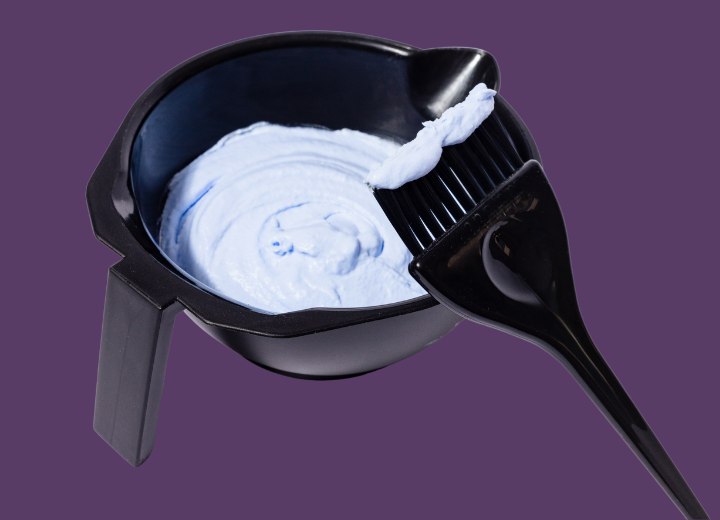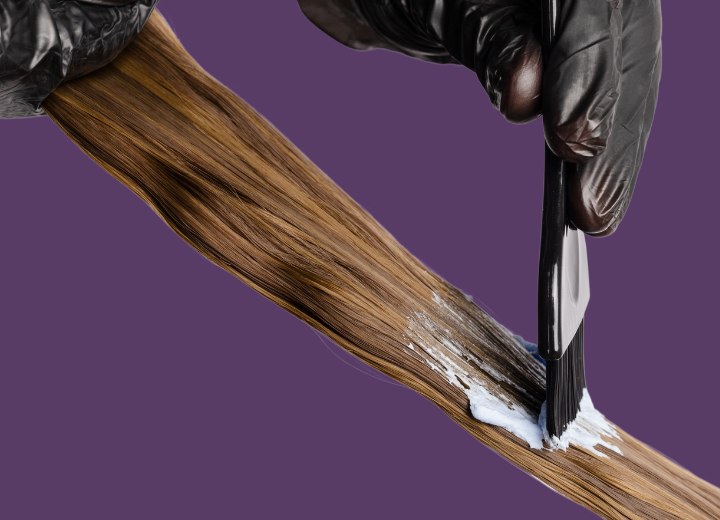Single Process Hair Color

Q: What is single process hair color? Is it safe and why would I want it?
A: Single process hair color is a hair coloring technique where a single color formula is applied evenly throughout your entire head in just one step. Unlike more complex methods like highlights, balayage, or double process color - which involve multiple stages - this approach delivers consistent, even color in a much simpler way.
The process begins with a consultation, where your colorist assesses your current hair color and discusses your desired result. From there, they’ll create a custom formula tailored to your hair type, condition, and goals.
Once the color is mixed, it’s applied from roots to ends and left to process, typically for 30 to 45 minutes. After the color sets, it’s rinsed out and followed with a conditioning treatment to help maintain the health and shine of your hair.
Benefits of Single Process Hair Color
There are several compelling reasons to consider single process color. For one, it provides full gray coverage, making it perfect for those looking for a uniform shade. It also delivers an even, consistent result without any dramatic color variation.
Since it involves only one chemical process, it’s gentler on your hair compared to techniques like bleaching and toning. The process is also more time-efficient, usually taking about one to two hours, and it tends to be more budget-friendly, requiring fewer products and less time in the chair. Plus, with just one formula in play, the final result is more predictable and easier to replicate.
Why You Should Choose Single Process Color
This coloring method is ideal for anyone looking to cover gray hair completely, achieve a darker or slightly lighter tone, or maintain a rich, all-over hue without highlights or added dimension. It’s especially useful for those who prefer regular touch-ups and want a straightforward, low-fuss coloring routine.
It is a good lower-cost alternative to multi-step coloring methods. However, if you’re aiming for a bold transformation - like going several shades lighter - you may need a double process treatment instead.


Types of Single Process Hair Color
Single process hair color also comes in different forms, each suited to different needs and levels of commitment. There are three main types:
• Permanent Color - Uses ammonia and hydrogen peroxide to open the hair cuticle, remove some natural pigment, and deposit new color. It offers the longest-lasting results but requires regular root touch-ups.
• Demi-Permanent Color - Contains less ammonia and developer, so it deposits color without significantly lightening hair. It fades gradually over time, making it a great option for less commitment and less damage.
• Semi-Permanent Color - Coats the outer layer of the hair without penetrating deeply. It washes out after 6-12 shampoos, making it ideal for trying out new shades without long-term commitment.
Choosing the Right and Safe Option for Your Hair
Choosing the right type of single process color depends on your hair goals, health, and how much maintenance you’re willing to commit to. If your hair is fragile or damaged, a gentler option like demi-permanent might be best.
You’ll also want to consider your budget and how often you’re comfortable with salon visits, since single process color generally requires touch-ups every four to six weeks.

In short, single process hair color is a safe, effective, and versatile choice for anyone seeking a uniform, vibrant hair color. Whether you’re covering grays, enhancing your natural tone, or just looking for a change that doesn’t break the bank or demand hours in the salon, this technique delivers beautiful, reliable results.
Working with a professional colorist ensures you’ll get the perfect formula for your hair’s specific needs, leaving you with a look you’ll love.
©Hairfinder.com
See also: How to color hair